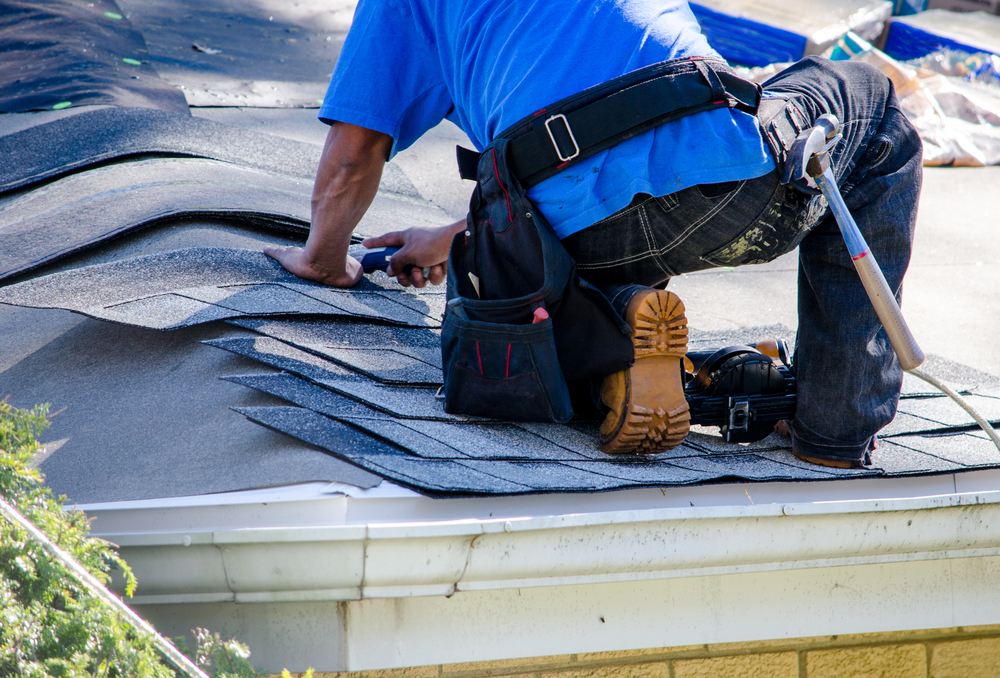Universal Roofing & Exteriors is a leading roofing and exterior services provider committed to delivering high-quality solutions to customers. This blog post will explore the topic of roof insulation and provide insights into the best options available, based on Universal Roofing & Exteriors’s expertise and experience.
What Roof Insulation Is Best? Understanding Your Options for Energy Efficiency
Choosing the right roof insulation is a critical decision for homeowners and builders alike. It plays a fundamental role in enhancing a building’s energy efficiency, maintaining comfortable indoor temperatures, and reducing heating and cooling costs. Quality insulation under your roof acts as a barrier to heat flow, keeping interiors warm in winter and cool in summer. Different materials offer varying levels of thermal resistance, known as R-values, which indicate their effectiveness at insulating a home.
The market presents a range of roof insulation options, each with its own set of properties and benefits. Materials such as fiberglass, cellulose, spray foam, and rigid foam boards are commonly selected for their insulating capabilities. Factors influencing the choice of insulation include climate, the design of the roof and attic, budget constraints, and personal preferences regarding environmental impact and sustainability.
Properly installed insulation can lead to significant energy savings and ensure a comfortable living environment. Homeowners must consider the longevity and installation process of the insulation material, along with its R-value, to make an informed decision. By selecting the appropriate insulation for their roof, they can invest in the long-term performance and efficiency of their home.
Understanding Roof Insulation Types
Choosing the right roof insulation depends on a thorough understanding of the varied insulation types and their specific properties, installation methods, and maintenance needs. Each type is designed to meet different structural and climate requirements.
Material Properties
Different types of roof insulation materials include fiberglass, cellulose, spray foam, and rigid foam boards. Fiberglass, composed of fine glass fibers, is commonly used due to its non-flammable properties and ease of installation. Cellulose, made from recycled paper that is treated for fire resistance, provides a more eco-friendly option with decent thermal performance. Spray foam insulation stands out for its exceptional air sealing ability and high R-value per inch, making it one of the best roof insulation options. Rigid foam boards offer high insulative value and moisture resistance, with materials like polystyrene, polyisocyanurate, and polyurethane.
- Fiberglass: Non-flammable, easy to install
- Cellulose: Eco-friendly, good thermal performance
- Spray foam: Excellent air sealing, high R-value
- Rigid foam: Moisture-resistant, high insulative value
Installation Techniques
The installation of roof insulation varies with the material chosen. Fiberglass and cellulose are typically installed in batts or blown in, offering flexibility for both new constructions and retrofits. Spray foam is applied using a spray gun, expanding to create a seamless layer of insulation, thus requiring professional installation. Rigid foam boards need to be cut to fit and are often installed beneath the roof sheathing to provide continuous insulation.
- Batts or blown-in: Suitable for retrofitting
- Spray gun application: Requires professional installation
- Rigid foam cutting: Needs precise fitting
Maintenance Requirements
Maintenance needs for roof insulation materials differ. Fiberglass and cellulose may settle over time and will require occasional checks to ensure they maintain their insulative properties. They must also stay dry to prevent mold growth and deterioration. Spray foam is low on maintenance due to its durable and air-tight nature but checking for any wear or gaps over time is advisable. Rigid foam panels must be inspected for any damage or water intrusion as these could compromise their insulating capability.
- Regular checks for settling: Necessary for fiberglass and cellulose
- Dry condition monitoring: Prevents mold and deterioration
- Inspections for wear or gaps: Advisable for spray foam
- Damage and water intrusion checks: Crucial for rigid foam panels
Selection Criteria
When selecting the best roof insulation, one must evaluate factors such as insulation efficacy, long-term value, and regional climate demands. These criteria will guide the decision-making process to choose the right insulation that offers the best advantages while also understanding the potential disadvantages.
Comparing Insulation Efficacy
Insulation efficacy is measured in terms of its R-value, which indicates the insulation’s resistance to heat flow. The higher the R-value, the greater the insulation effectiveness.
- Fiberglass Insulation: Typically has an R-value of 2.2 to 2.7 per inch.
- Cellulose Insulation: Offers approximately 3.1 to 3.8 per inch.
- Spray Foam Insulation: Has an R-value of 6.0 per inch for closed-cell foam.
Advantages:
- Fiberglass: Non-flammable, inexpensive.
- Cellulose: Superior sound insulation, eco-friendly.
- Spray Foam: Excellent air barrier, fills irregular spaces.
Disadvantages:
- Fiberglass: Potential irritation and health concerns.
- Cellulose: Can settle over time, potentially diminishing efficacy.
- Spray Foam: Higher cost, professional installation required.
Assessing Long-Term Value
Long-term value encompasses the lifespan, sustainability, and maintenance requirements of the insulation.
- Lifespan:
- Fiberglass: Can last 10-25 years if kept dry.
- Cellulose: Typically lasts 20-30 years.
- Spray Foam: Often exceeds 30 years.
- Sustainability:
- Fiberglass: Made of recycled glass.
- Cellulose: Consists of up to 85% recycled paper fiber.
- Spray Foam: Chemical-based, less eco-friendly.
- Maintenance:
- Fiberglass requires periodic checks for sagging or displacement.
- Cellulose may need topping up due to settling.
- Spray Foam typically needs minimal maintenance.
Regional Considerations
The regional climate will affect the choice of insulation due to different thermal requirements.
- Hot Climates: Reflective or radiant barriers may be beneficial to prevent heat gain.
- Cold Climates: High R-value materials such as spray foam or thick layers of cellulose should be considered to retain heat.
- Moisture Levels: In humid areas, it is crucial to consider insulation that resists mold and moisture, such as closed-cell spray foam.
By considering these specific selection criteria, one can determine the most appropriate roof insulation type to meet both the immediate and the long-term needs for a building’s thermal management.
Installation and Maintenance
Proper installation and regular maintenance are key to ensuring that roof insulation performs effectively and lasts for its intended lifespan.
Professional Installation Guide
Choosing a Professional: It is recommended to engage a certified installer who is familiar with local building codes and the specific insulation material you’ve chosen to ensure it is installed correctly.
Installation Process: A professional will typically assess your attic space, measure the area, and prepare the surface by cleaning it and sealing any gaps. The insulation is then laid out uniformly to avoid compromising R-value—the measure of thermal resistance.
DIY Installation Tips
Safety First: Before attempting DIY installation, one should have personal protective equipment like gloves, a dust mask, and safety goggles.
Precise Measurement: Cut the insulation material neatly to fit the space without compressing it as this can reduce its efficiency.
- Fiberglass Batts: Ensure that they fill the space between trusses completely without gaps.
- Rigid Foam Boards: These should be cut to size and can be applied using a special adhesive.
Maintenance Best Practices
Inspection Schedule: Roof insulation should be inspected semi-annually for any signs of moisture, mold, or pest infiltration which can compromise its integrity.
Keep it Dry: Ensure that your attic has adequate ventilation to prevent condensation which can damage the insulation and reduce its R-value.
- Sealing Leaks: Periodically check for and seal leaks in the roof to prevent water damage.
Regular maintenance helps to prolong the lifespan of roof insulation and ensure it continues to perform efficiently.
Roof Insulation Myths and Recommendations
In exploring the realm of roof insulation, it’s essential to differentiate between prevalent myths and solid expert recommendations. By doing so, homeowners can ensure they make informed decisions that provide long-term benefits.
Debunking Common Myths
- Myth: More insulation always means more energy savings.
- Fact: There is an optimal level of insulation; beyond this, there are diminishing returns on energy savings.
- Myth: All types of insulation provide the same level of energy efficiency.
- Fact: The efficiency of insulation is measured by its R-value—higher values indicate better insulation properties.
Expert Recommendations
- Materials: Universal Roofing & Exteriors suggests selecting materials with a high R-value suitable for your climate zone.
- Installation: Proper installation is critical. Gaps and compression can significantly reduce insulation effectiveness.
- Upgrades: When upgrading, they recommend considering reflective insulation or radiant barriers in warm climates to reduce heat gain.
By avoiding these common misconceptions and adhering to proven expert advice, one can maximize the benefits of quality roof insulation.








